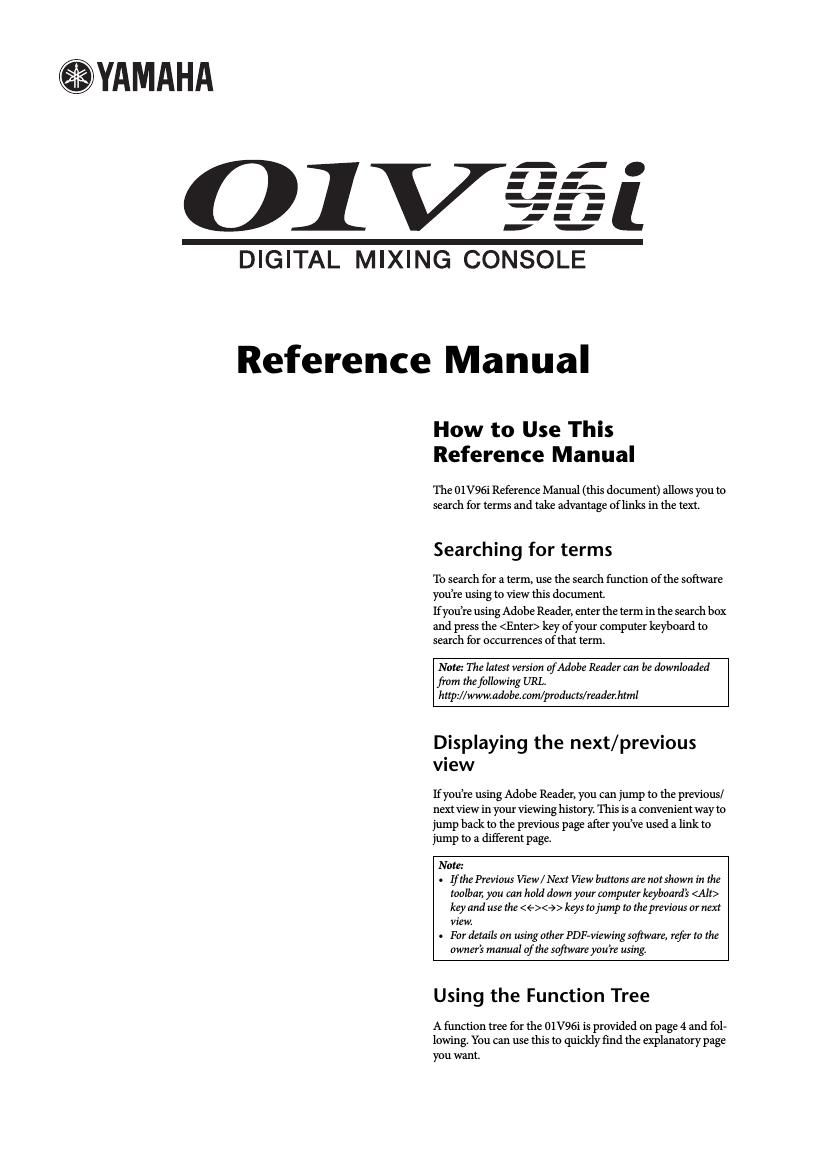Yamaha 01v96i reference manual
This is the 186 pages manual for yamaha 01v96i reference manual.
Read or download the pdf for free. If you want to contribute, please upload pdfs to audioservicemanuals.wetransfer.com.
Page: 1 / 186
